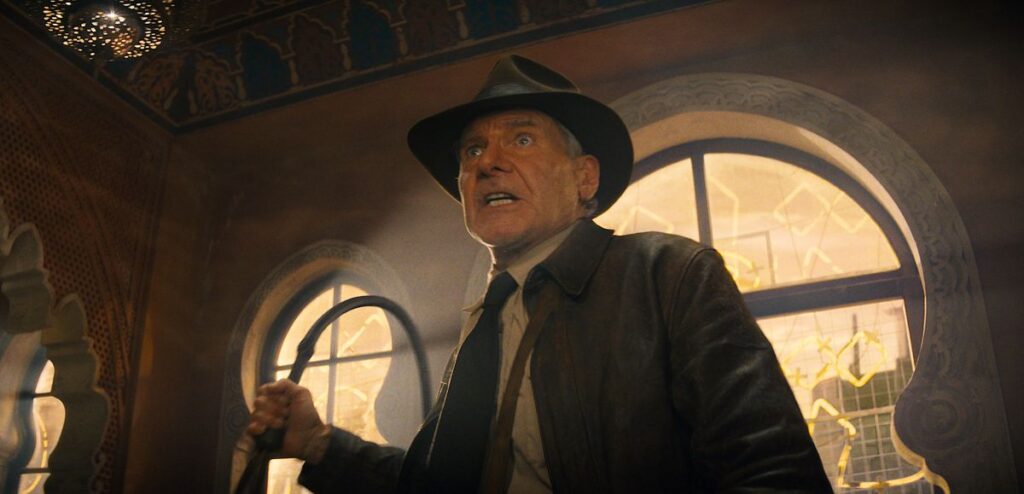Harrison Ford has returned for his final adventure as everyone’s favorite Nazi-battling archaeologist in Indiana Jones and the Dial of Destiny, but general excitement for the continuation of the Indiana Jones franchise has been diluted as fans discuss Ford’s age and whether he can still perform as a pulp adventurer. Ford is 80 years old — 20 years older than Sean Connery was when he played Indy’s father in The Last Crusade. Do audiences want to see an octogenarian play one of cinema’s most iconic action heroes? Sure, Ford spends a significant part of the movie digitally de-aged, but some fans clearly aren’t convinced that Ford is up for a globe-trotting adventure.
The skeptics aren’t wrong to point out that Ford’s physical limitations make him unconvincing as a typical action hero. But here’s the thing: Indiana Jones never was a typical action hero. The secret weapon of the Indiana Jones franchise isn’t the way it indulges tough-guy archetypes, but the way it subverts them.
Almost every set-piece throughout the Indiana Jones franchise sees Jones at a physical disadvantage. He’s nearly always getting pummeled — by Nazis, other adversaries, or the environment — until he finally discovers a way to outmaneuver or escape them. Sometimes that’s through plain cheating. His most epic win across the franchise is when he doesn’t even bother to duel an expert swordsman, and instead shoots him point-blank. And let’s not forget Indy’s near-debilitating fear of snakes.
Image: Lucasfilm
Indy’s limitations and weaknesses are the genius of this franchise, and the reason he remains such an endearing hero. In spite of Ford’s Hollywood looks and the highly choreographed set-pieces in the Indiana Jones movies, the character still has an everyman charm that makes him easier to root for and even raises the stakes. When Indy fights a foe, viewers on the edge of their seats because they know he isn’t invincible. In that way, he’s always been the quintessential anti-fascist hero, fighting the good fight against the supposed Übermenschen of Nazism, in spite of impossible odds.
Sure, Ford can’t believably hitch a ride on the underside of a truck by clinging to its frame anymore. Those days are gone. But leaning into the character’s limited physicality means Indiana Jones is forced to use his wits to get out of scrapes now more than ever.
Yes, 2008’s Indiana Jones and the Kingdom of the Crystal Skull had the same issue with Ford’s retiree age, and the results there were lackluster. Director Steven Spielberg didn’t emphasize Indy’s underdog nature in Crystal Skull as much as he did with past films — instead, he overcompensated by using CGI to have Indiana performing ridiculous stunts and surviving even more ridiculous disasters. (A man who can barely win a boxing match against a Nazi shouldn’t be able to withstand a nuclear blast by hiding from it in a fridge.)
The truth is, though, that Indiana Jones has always been vulnerable to defeat, and audiences have always loved him for it. They were terrified for him when he was put under the spell of Mola Ram in Temple of Doom, and it was a special kind of magic when he snapped out it with Short Round’s help. He’s a character whose strength isn’t a pistol and a bullwhip, but sheer perseverance and grit, and the filmmakers behind the franchise have never been shy about that.
They even addressed these concerns about Ford’s age all the way back in Indiana Jones’ first adventure, 1981’s Raiders of the Lost Ark. As he famously tells Marion Ravenwood, who’s concerned about his age in the face of all the dangers they’ve gone through: “It’s not the year, honey, it’s the mileage.” Let those words of wisdom quell skepticism, so audiences can enjoy Ford’s final return to the fedora.

